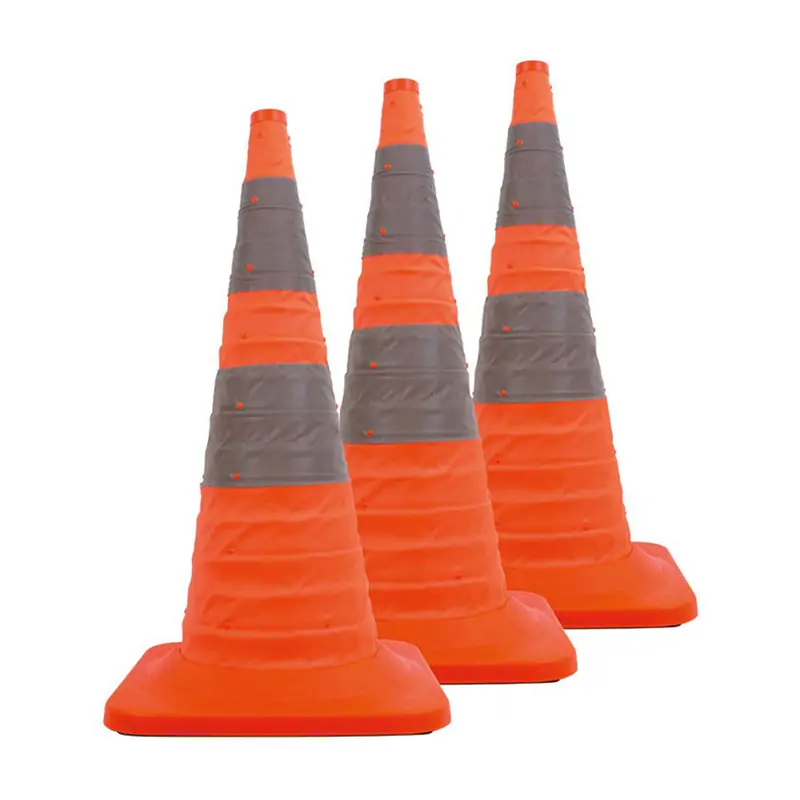The lifespan of traffic cones used in folding traffic cones can vary depending on several factors, including the quality of construction, frequency of use, environmental conditions, and maintenance practices. Generally, high-quality traffic cones made from durable materials can have a lifespan ranging from several years to over a decade.
Here are some factors that can influence the lifespan of traffic cones used in folding traffic cones:
- Material Quality: Traffic cones are typically made from materials such as PVC (polyvinyl chloride) or thermoplastic rubber, which offer durability and resistance to weathering, UV radiation, and impacts. Cones made from high-quality materials are more likely to withstand prolonged use and exposure to harsh environmental conditions without deteriorating.
- Frequency of Use: The lifespan of traffic cones can be influenced by how frequently they are used and deployed. Cones that are used infrequently or for short durations may last longer than cones that are subjected to constant handling, transportation, and deployment in high-traffic areas.
- Environmental Conditions: Environmental factors such as sunlight, temperature extremes, moisture, and pollution can affect the lifespan of traffic cones. Exposure to prolonged sunlight can cause fading, degradation, and brittleness of cone materials over time. Similarly, exposure to extreme temperatures or harsh weather conditions can accelerate wear and deterioration.
- Maintenance Practices: Regular maintenance and care can help prolong the lifespan of traffic cones. Cleaning cones periodically to remove dirt, debris, and contaminants can prevent buildup and extend their usable life. Additionally, storing cones properly when not in use, such as in a cool, dry location away from direct sunlight, can help prevent premature degradation and deterioration.
- Impact and Abuse: The lifespan of traffic cones can be shortened by impacts from vehicles, equipment, or debris, as well as intentional or accidental abuse such as kicking, dropping, or striking the cones. Cones that are subjected to frequent impacts or rough handling may experience structural damage or deformation that affects their usability and longevity.
- Manufacturing Standards: Traffic cones that meet recognized manufacturing standards and specifications, such as those set by regulatory agencies or industry organizations, are more likely to have consistent quality and durability. Cones that comply with applicable standards are designed and tested to withstand the rigors of traffic control and safety applications, which can contribute to longer lifespans.
Overall, the lifespan of traffic cones used in folding traffic cones can vary based on a combination of factors, and it’s essential to consider these factors when selecting, using, and maintaining traffic cones to ensure optimal performance and durability over time. Regular inspection, maintenance, and replacement of worn or damaged cones can help maximize their lifespan and effectiveness in traffic control and safety applications.
